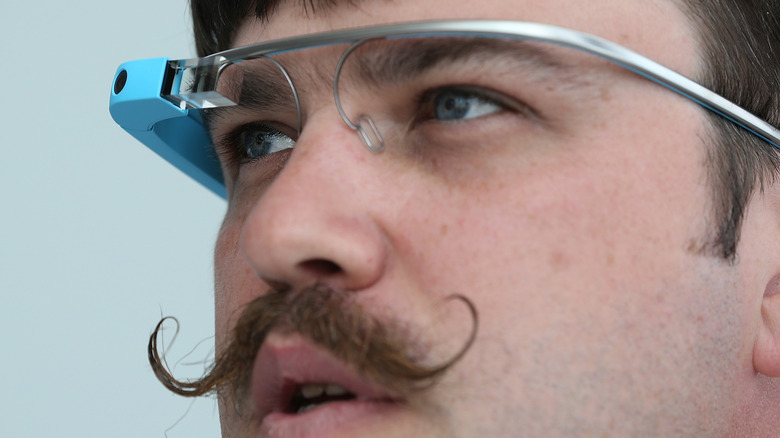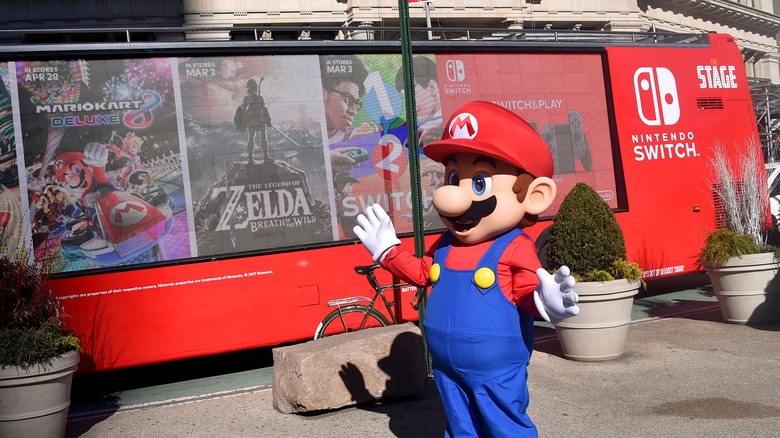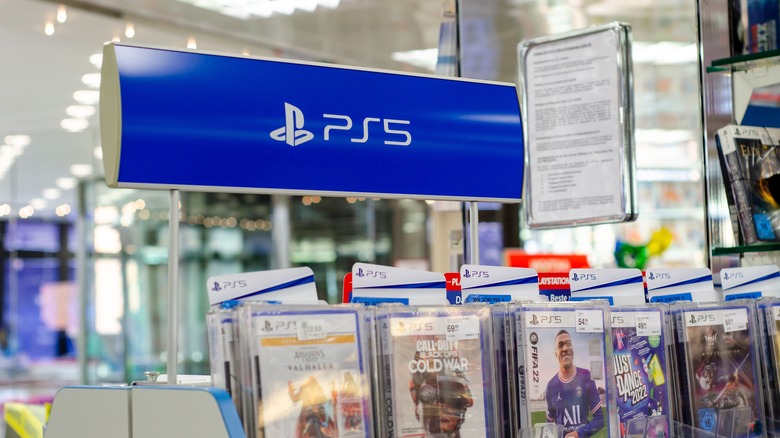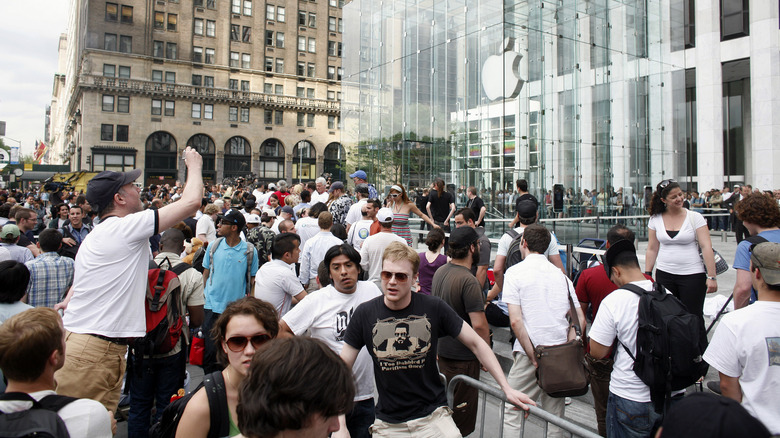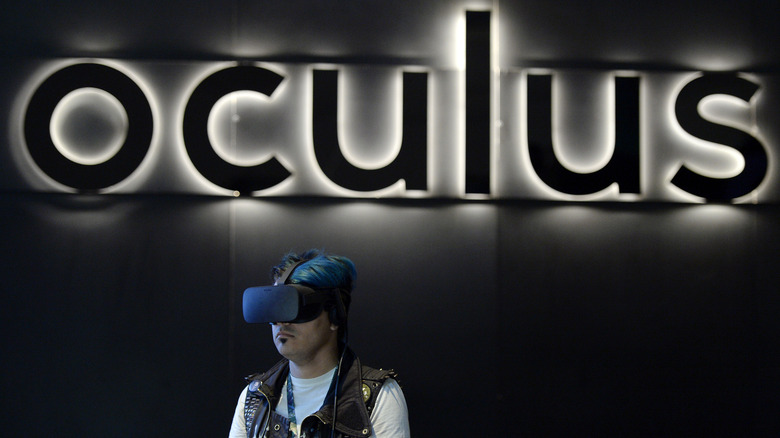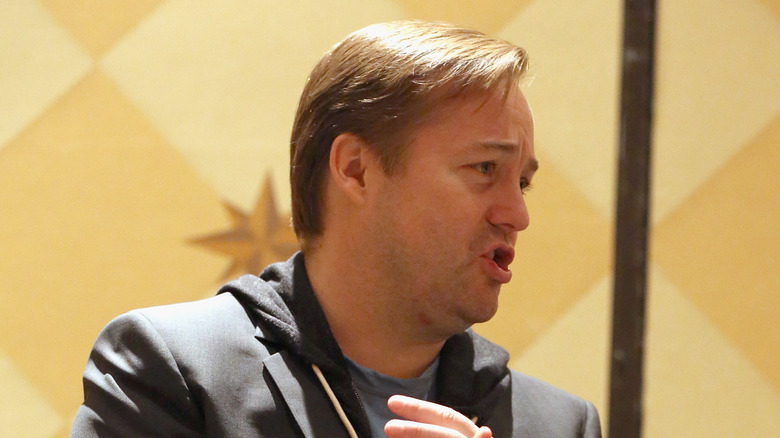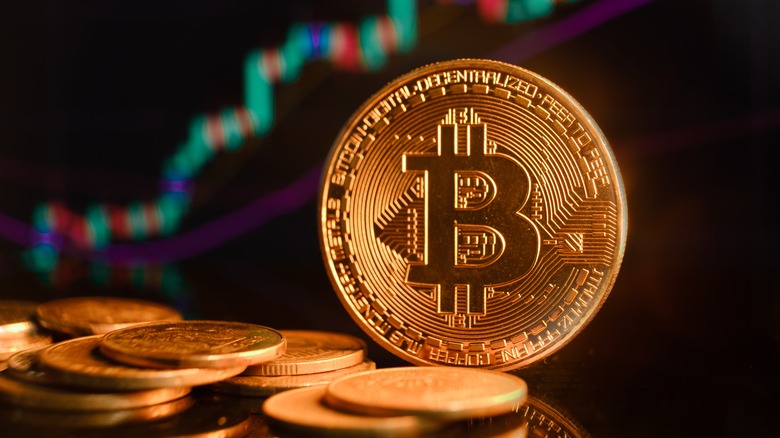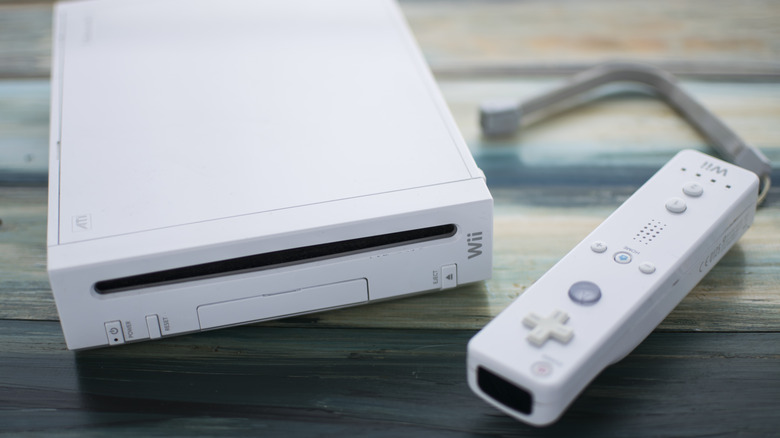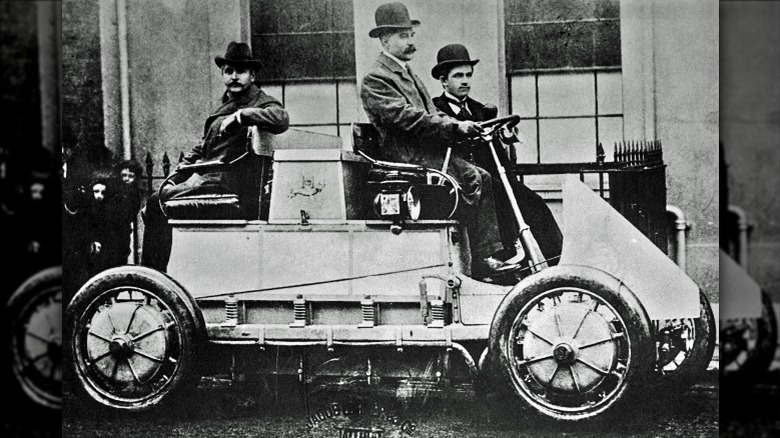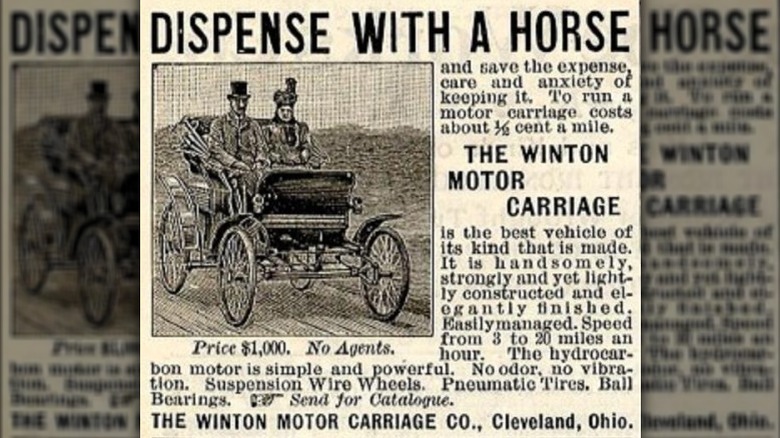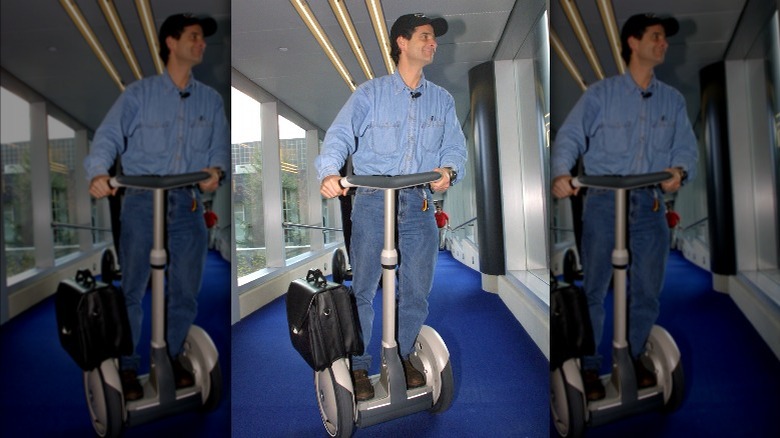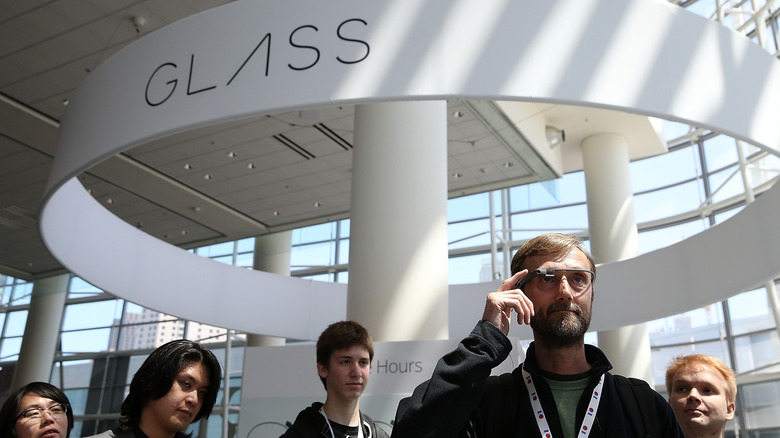The First People Who Bought Famous Technology
There are three types of people in the world: those who can break a computer just by looking at it, those who embrace new technologies, and those who are so obsessed with every development in the tech world that they will wait in line for days just to get their hands on a new release. The first two groups really do not understand the last one.
But even among those who have to be there at the midnight launch of a new phone or gaming console, there is an even more dedicated subgroup: the people who don't just want to be there, they want to be first in line. This usually means camping out even longer, but often comes with sweet perks too, like media coverage or meeting the president or CEO of whatever tech company is releasing their new gadget.
Whether it involves months of planning, mostly luck, or is a complete surprise, there can only be one person in the world who is the first consumer to get their hands on a new kind of technology. And thanks to how big a deal these releases are and the aforementioned media coverage, it's often possible to know who those lucky individuals were. Here are the first people who bought famous technology.
Nintendo Switch
Nintendo fans are passionate about their favorite video game and console company, so to be considered what The Comeback calls "Nintendo's No. 1 fan on the internet," you know they take their passion to another level. Alex Pekala, who also goes by Captain Nintendo Dude, is that fan. It should come as no surprise that in 2017 alone, he was first in line for numerous new Nintendo releases.
The biggest by far was the Nintendo Switch. Pekala waited across the street from the Nintendo store in New York City for a full month beforehand in order to be first in line. He even vlogged about his adventure for his many YouTube followers. So it must have been quite a blow when – technically – he was beaten to the punch by someone who put in no effort at all. Thanks to a mix-up, one Switch was sent to a customer early. While Pekala was still waiting in a line (of one person), Mandatory reports that someone going by hiphoptherobot posted an unboxing video online proving they already received their Switch.
Pekala was chill about the whole thing and didn't think his adventure was in vain, tweeting, "It's symbolic. It'll be the first consumer-sold Nintendo Switch in America. From the flagship store. From the president of the company." Even if the shine was taken off that purchase a bit, he was back in line 10 days early later that year when "Super Mario Odyssey" went on sale, and he was confirmed as the first person to purchase it.
PS4 and PS5
Every new PlayStation console release is a huge deal, and the first person to buy the PS4 could legitimately be one entry on this list, while the PS5 could be its own entry as well. The reason they don't need to be is that the same person was the first one to get both of them.
Joey Chiu never planned to be the first in line for the PS4 release in New York City in 2013. He said (via Kotaku), "I was fine with that because at the end of the day, there were gonna be 444 units for sale here and I wanted to walk away with one, not necessarily the first one." But it turned out the people he saw when he turned up were there to work the event, not buy one, and so far no one was in line. The problem was this was a few days before the release, and Chiu had classes and no one to hold his spot for him. But Sony told him the spot was his, and that he could leave and come back.
Perhaps still on a high from being the first to get a PS4, Chiu was also the first person to buy the PS4 Pro in 2016, according to Polygon. In return for his dedication, Sony made sure he didn't have to wait in line for the PS5, unexpectedly sending him one a couple of days before that launch with a note that said, "Patience is a virtue."
iPhone
In 2012, in honor of the iPhone's fifth birthday, Robin Parish of the Apple Gazette did something kind of crazy. He decided to track down the first person to buy all five versions of the iPhone then available. He took the mission seriously, too, taking into account everything from time zones to store hours. In a very impressive feat, he managed to confirm four of them.
The guy who was first in line for the original iPhone wasn't even an Apple fanboy: He was a fan of being first in line. No, really. Greg Parker tried to be first in line for a huge variety of events, and the iPhone release was just another one to add to his list. He waited in front of the NYC Apple store for four days in 2007 to score one.
Thanks to how time works, the first person to buy an iPhone 3G, Jonny Gladwell, got his at a store in New Zealand after camping out for three days. But controversy erupted when it was revealed he was part of a publicity stunt arranged by – of all companies – the Yellow Pages. He didn't even end up keeping the phone.
But perhaps the first person to buy the iPhone 6 in 2014 is the most noteworthy. As ABC News reported, a man named Jack bought his in Australia and emerged from the store to show it off to the news cameras. On live TV, he opened the box ... and immediately dropped the phone on the concrete.
Oculus Rift
The first person to get his hands on an Oculus Rift VR headset in 2016 didn't have to sit outside for days in order to be the first in line to buy it (which is good, since he lived in Alaska). According to Vox, as one might expect for a technological advance like VR, Ross Martin just needed to be very fast online. Three months before, he'd been the first person to pre-order the headset. But the wait had been much longer than that for those interested in developments in virtual reality. When asked if he'd been on top of the many updates over the years, he said, "I try not to follow too close because the wait would be harder."
He was at work when the longed-for headset finally came ... unexpectedly delivered by the founder of Oculus himself, Palmer Luckey. Luckey told Martin, "I've been working on this for so long and you're the first person to actually get one, so it's kinda like me taking all this work and then handing it off to you. So you have to make sure you have fun with it or something." Stirring, Churchillian words from the founder. Since he was at his job, Martin had to wait even longer to play with his new toy, since it could only connect to his home computer.
Apropos of nothing, Palmer Luckey is the billionaire brother of Ginger Luckey, who is married to the controversial U.S. Representative Matt Gaetz, according to The New York Post.
Tesla Model S
With his purchase of Twitter in 2022, Elon Musk found millions of people suddenly questioning his ability to run a company. But many years before that another person had doubts about one of Musk's other companies, Tesla, according to Yahoo! News. But instead of throwing $8 away to have fun with a blue check before the possible collapse of the company, Jason Calacanis (pictured) gave Musk $100,000, pre-ordering two of Tesla's first model, even though he thought he'd never see the money again – or the cars.
Calacanis later explained that over dinner, Musk told him about the many problems he was having with SpaceX and his divorce. Demanding to hear some good news, Musk showed Calacanis a picture of a small clay version of the Model S. Calacanis went home and wrote checks for two of them. Fortunately, Calacanis was worth millions, which meant he could stand to lose the money. Otherwise, his wife would have probably been furious when he explained to her, "We're never going to see this, this is going to pay for, like, a couple days of payroll. Tesla's going out of business, but I have to support my friend."
However, two years later, he discovered the checks had finally been cashed and he had the first reservation spot for the car. Calacanis tried to turn it down, telling Musk, "Elon, you don't have to give me the first one. And he goes, I want you to have it, you ordered it before anybody, you deserve it." Calacanis received the historic first Tesla in 2012.
Bitcoin
For those who are still only vaguely aware of cryptocurrencies, and only read news about them when some new disaster befalls the crypto community, it might be shocking to know that Bitcoin, the OG cryptocurrency, was first "mined" way back in 2009. The identity of the person who created it is still unknown, as they went by the fake name Satoshi Nakamoto, according to The Street.
Because of how blockchain, the technology that makes Bitcoin function, works, those original Bitcoins still exist, and it's possible to know who has them now, or at least what digital wallet they are in. But what's important for this list is the first person besides the creator to own a Bitcoin, per The Washington Post: Hal Finney.
In 2013, Finney wrote a blog post on a Bitcoin forum about that first transaction. An early follower of the technology, Nakamoto sent him 10 Bitcoin as a test. Finney spend a few days mining more, but since it was hard on his computer, he stopped, and then completely forgot about Bitcoin for almost two years. Once he learned that not only was Bitcoin still a thing, but it was actually worth something, he looked at his coins as a long-term investment. As he was dying from ALS by that point, he wrote, "My bitcoins are stored in our safe deposit box, and my son and daughter are tech savvy. I think they're safe enough. I'm comfortable with my legacy."
Nintendo Wii
The Nintendo Wii was a phenomenon when it was released in 2007, with even people who wouldn't normally consider themselves gamers excited to try out this new kind of console. But it would be hard to be more excited than Isaiah "Triforce" Johnson, who was first in a line that eventually stretched to over 1,000 people outside the Toys 'R' Us in New York City for the midnight launch of the Wii, according to Reuters.
"I had to get it first," Johnson said. He did, and his purchase was rung up by Nintendo of America President Reggie Fils-Aime himself. Johnson also grabbed one of the first games to go along with it, which went on sale at the same time: "The Legend of Zelda: Twilight Princess." He told the news outlet, "I'm a 'Zelda' fan. I have to get 'Zelda.'" And he made this clear by wearing a Zelda sweatshirt to the launch, underneath his Nintendo leather jacket, of course.
Four years later, Johnson was at the head of the line again, this time at a Manhattan Best Buy waiting for the release of the Nintendo 3DS, Wired reported. By then, his dedication was such that the Zelda reference "Triforce" was no longer just a nickname: Johnson'd had his name legally changed to include it. Still, waiting for days outside in the cold tested even his devotion to the brand. "Some nights I'm like, 'What am I doing?'" he said. "How much do I really love Nintendo?"
First hybrid car
Back at the dawn of time, a.k.a. the late 1990s, hybrid cars started hitting the streets of the Japan, and by 2001 they were in the U.S. Within six years, there would be more than 1 million Toyota Priuses out there. However, the first person to buy a Prius might be able to claim they got the first hybrid car from Toyota, but they were almost a century too late to claim the title of the first person in the world to buy a hybrid car, period.
According to How Stuff Works, the first hybrid was built in the late 1800s by an Austrian man named Jacob Lohner. Even regular gas-guzzling cars were pretty new at that point, but Lohner already saw a way to improve them, one that would sadly not take off, considering the world might be in much better shape today if it had. Lohner hated the smell of gas engines, so he found a way to incorporate a battery with a Porsche engine and one of his own models of car. In 1900, he introduced the Lohner-Porsche Elektromobil (pictured) to the world. It took further tinkering to perfect, but eventually, 300 people were the proud owners of the first hybrid.
But who got the first-first one? An Englishman by the name of E.W. Hart. While he obviously liked the idea, since he was willing to risk this new technology, he asked for even more tinkering to his Elektromobil, which ended up turning his history-making hybrid into an almost as important early development in four-wheel drive.
First car in the U.S.
Cars were available in Europe long before they came to the U.S. So while Robert Allison might not be able to claim to be the first customer in the world to buy a car, at least he gets a whole country.
According to Coal Region Canary, the Winton Motor Carriage Company tried to get the word out about their new car by driving it almost halfway across the country, from Ohio to New York. The founder of the company, Alexander Winton took along a friend and made sure they got lots of media coverage. But while Americans read about the trip in the papers, it seemed they were not convinced enough to buy a car themselves. So Winton took out traditional ads, like the one seen above.
Finally, on March 24, 1898, Robert Allison sent $1,000 to Winton. The first American was ready to try out this newfangled technology. It probably helped that Allison was a mechanical engineer. Since no one had cars to get the mail from one place to another quickly at that point, Winton didn't know he'd made the sale until the money arrived on April 1. A love of cars was born, as a profile on Allison in 1915 recorded that the then-88-year-old was "still as keen for motoring as he was at the start in 1898." By then, he no longer had that first car, since Winton wrote in 1913 that Allison sold it back to him after a few years, and it then went to the Smithsonian.
Segway
Ah, the Segway. Never has a new technology been bigged up so much by so many, only to crash and burn once the public got their hands on it. According to Slate, the Segway was originally called "Ginger," and what exactly Ginger was became almost a state secret.
Virtually everyone who was lucky enough to see and experience Ginger believed in it immediately and passionately. The author of the Slate piece was one of them. Dan Kois was a literary agent who managed to get Ginger's inventor, Dean Kamen (pictured), a $250,000 book deal in 2001, even though the publisher that made the deal didn't even know what Ginger was yet. Kois remembered his first time riding the device, writing, "I understood, finally, why investor after investor lined up to give Dean Kamen money, why people believed they would sell 6,000 Segways a week, why Steve Jobs declared that cities would architect themselves around this device."
While this was obviously the opposite of what happened, the first Segway owners seemed very happy. Thirty people eventually got theirs delivered early for winning an essay contest, according to Wired. The first 12 to receive their Segways included Chris Johnson, who was so enamored with his that he immediately ordered another, despite their $5,000 price tag. Phillip Torrone was another of the original dozen owners, who also got two, one for him and one for his wife, and was so convinced this was the transportation of the future that he sold his car to pay for them.
Google Glass
In 2012, a CNN headline announced, "Google glasses are $1,500 – and you can't have them." The computer that people could wear on their face like glasses got a massive debut at that year's Google I/O, even though the company admitted they weren't actually ready for release to the broader public. But, lucky for the people who attended the event, there were 2,000 of the not-good-enough-yet Google Glass prototypes available for them to buy, The Verge reported. This made them part of the "Explorer Program," which would work out the kinks in the gadget, and, of course, get Google lots of media attention.
While this is one technology where we can't put a name to who of those 2,000 got their Glass first, they were the only ones who had access to it for quite a while. Google dragged out the release, trying to perfect the technology along the way. A year after the first 2,000 people bought theirs, another 8,000 were allowed to hand over $1,500, including journalist and professor Jeremy Littau, who "won" his chance to buy a pair in 2013 after making the required pitch about how he would use Glass, as he wrote in MediaShift.
In 2014, Google finally put Glass on sale – for a single day. Yes. That was real thing that happened, per the BBC. It wasn't until later that year that anyone could buy them. Considering none of the first 2,000 owners had been crowing about theirs in the two years previously, it's not a surprise Glass was pulled in 2015.
